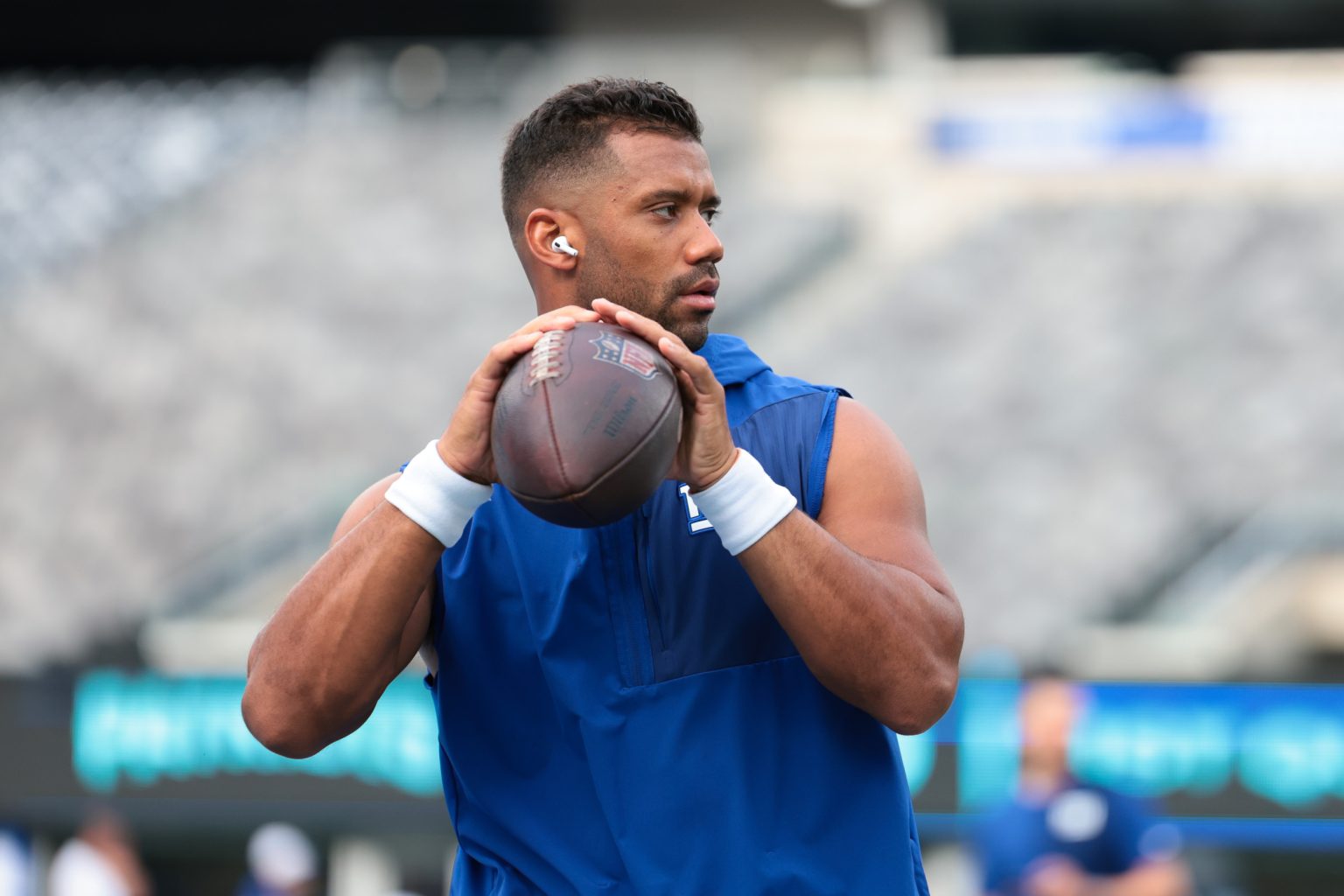Giants’ Quarterback Transition: Wilson Bridges the Gap as Dart Waits in the Wings
The New York Giants approached their quarterback dilemma this offseason with a multi-faceted strategy, balancing immediate needs with future aspirations. After selecting Abdul Carter early in the draft, they made a decisive move by trading back into the first round to acquire Ole Miss standout Jaxson Dart. While the organization clearly believes in Dart’s potential, they’ve opted for patience rather than rushing him into the starting role. This measured approach speaks to a broader organizational philosophy—developing talent properly while maintaining competitiveness in the present. Instead of thrusting their rookie quarterback into the fire, the Giants signed veteran Russell Wilson in free agency to provide stability and leadership during this transitional period.
Wilson arrives in New York at an interesting juncture in his career. No longer the Super Bowl champion who dominated with the Seahawks, he nevertheless demonstrated his remaining capabilities during his time with the Pittsburgh Steelers, where he compiled a respectable 6-5 record as a starter while throwing for 2,482 yards. His presence gives the Giants a proven commodity under center, someone who understands the rigors of NFL competition and can serve as both a capable starter and a mentor to the younger Dart. Head coach Brian Daboll confirmed Wilson as the team’s starter during training camp, entrusting him with the offense despite growing outside speculation about when Dart might take over. This decision reflects a desire to compete immediately while allowing their prized rookie the luxury of development without immediate pressure—a balance that many NFL teams struggle to achieve when transitioning between quarterback generations.
The perception of Wilson’s current abilities, however, varies significantly across the NFL landscape. FS1 analyst Nick Wright recently released his quarterback pyramid, placing Wilson at the very bottom of his rankings—behind numerous unproven young quarterbacks including JJ McCarthy, Bryce Young, and Michael Penix Jr. This assessment seems particularly harsh given Wilson’s track record and continued ability to win games, albeit not at his previous elite level. While Wilson’s recent performances haven’t matched his Seattle prime, his overall résumé suggests he deserves more respect than being ranked as the league’s least effective starting quarterback. This discrepancy between external perception and the Giants’ confidence in Wilson creates an interesting narrative heading into the season—can the veteran signal-caller prove his critics wrong while holding off the promising rookie behind him?
The pressure on Wilson extends beyond just winning games for the Giants in 2025. With Dart waiting in the wings as the organization’s clear quarterback of the future, Wilson’s tenure in New York likely has a predetermined expiration date. This reality transforms his season into an extended audition for his next opportunity, as he’ll need to demonstrate enough capability to earn another starting role elsewhere for 2026 and beyond. The spotlight intensified during preseason when Dart performed impressively in limited action, fueling speculation and debate about whether the rookie should be starting immediately. Wilson now faces the delicate balance of playing well enough to maintain his position while potentially mentoring the very player destined to replace him—a uniquely challenging psychological position that few veterans handle gracefully.
Adding complexity to Wilson’s situation is the team surrounding him. The Giants have assembled promising young talent at skill positions, giving Wilson legitimate weapons to work with. This roster construction serves dual purposes—providing Wilson with the tools to succeed in the present while building an infrastructure that will eventually support Dart when he assumes the starting role. If Wilson struggles early in the season, particularly with a capable alternative on the bench, Daboll may face mounting pressure to accelerate the transition plan. The NFL’s unforgiving nature means that preseason depth charts can quickly evolve based on regular season performance, and the Giants’ commitment to Wilson will likely be proportional to his effectiveness leading the offense.
Wilson’s journey begins in earnest on Sunday against the Washington Commanders, marking the first opportunity to validate the Giants’ decision to install him as their starter. This opening game represents more than just the start of another season—it’s the beginning of a fascinating organizational balancing act between present competitiveness and future development. For Wilson personally, it begins what might be his final chapter as an NFL starter, a chance to rewrite perceptions about his current abilities while potentially mentoring his eventual successor. How the Giants navigate this quarterback situation will reveal much about their organizational philosophy and patience. Meanwhile, fans and analysts will closely monitor both Wilson’s performance and Dart’s development, wondering not if but when the torch will be passed to the next generation.


